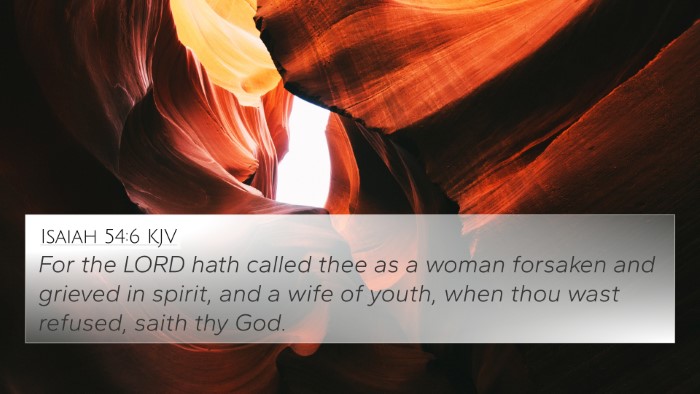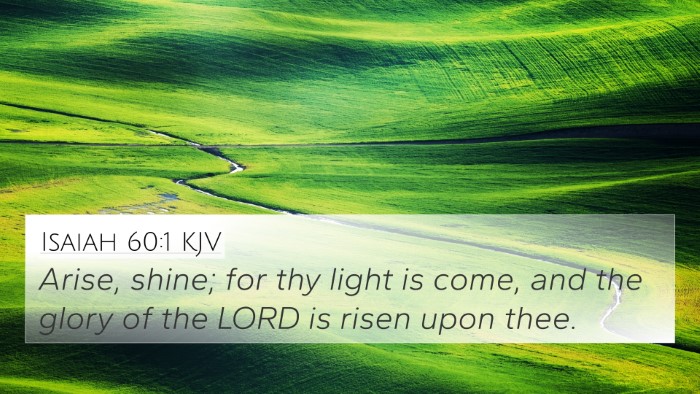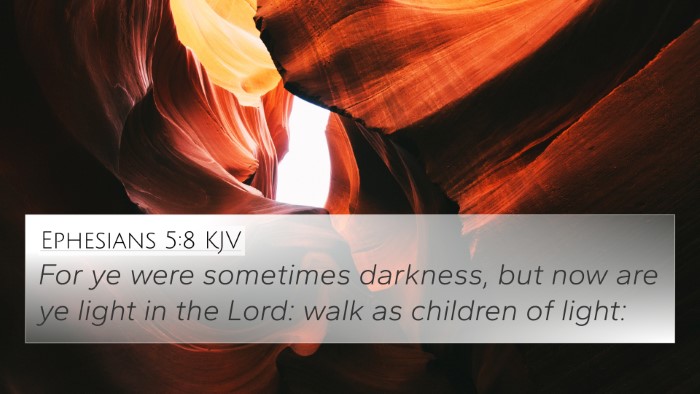Understanding Song of Solomon 2:11
"For, lo, the winter is past, the rain is over and gone." This verse marks a transition, signifying the end of a difficult season and the arrival of brighter days.
Context and Overview
The Song of Solomon, attributed to Solomon, is a poetic exploration of love, desire, and romantic relationships. In Chapter 2, verse 11 serves as a metaphor for renewal and hope.
Verse Meaning and Interpretation
Public domain commentaries provide various insights into this verse, highlighting themes of renewal and the natural cycles that reflect the dynamics of love:
- Matthew Henry: Emphasizes that the winter symbolizes hardships and struggles in life. The arrival of spring represents new beginnings and hope, which resonates with the human experience of love's seasons.
- Albert Barnes: Notes the significance of seasonal change, interpreting winter as a time of barrenness which gives way to growth and vitality, indicating that love, like nature, experiences cycles of challenge and rejuvenation.
- Adam Clarke: Offers an allegorical interpretation, suggesting the winter and rain represent trials that lovers endure, leading to a flourishing relationship hinted by spring’s arrival.
Thematic Bible Verse Connections
Song of Solomon 2:11 echoes throughout the Scripture, revealing interconnected themes of love, hope, and renewal. Here are 10 Bible verses that relate to this concept:
- Isaiah 43:19: "Behold, I will do a new thing; now it shall spring forth; shall ye not know it?" - Expresses God's promise of renewal.
- 2 Corinthians 5:17: "Therefore if any man be in Christ, he is a new creature: old things are passed away; behold, all things are become new." - Highlights transformation and new beginnings.
- Psalm 30:5: "Weeping may endure for a night, but joy cometh in the morning." - Reflects the transition from sorrow to joy.
- Revelation 21:4: "And God shall wipe away all tears from their eyes; and there shall be no more death, neither sorrow, nor crying." - Promises a future without pain.
- Ecclesiastes 3:1: "To everything, there is a season, and a time to every purpose under the heaven." - Affirms the cycles of life.
- Jeremiah 29:11: "For I know the thoughts that I think toward you, saith the Lord, thoughts of peace, and not of evil, to give you an expected end." - Encourages trust in God's plans for our future.
- Philippians 1:6: "Being confident of this very thing, that he which hath begun a good work in you will perform it until the day of Jesus Christ." - Reflects God's ongoing work in our lives.
- Isaiah 61:3: "To appoint unto them that mourn in Zion, to give unto them beauty for ashes…" - Speaks of restoration and renewal.
- Song of Solomon 4:16: "Awake, O north wind; and come, thou south; blow upon my garden, that the spices thereof may flow out." - Invokes the imagery of awakening and life.
- Hosea 6:1-2: "Come, and let us return unto the Lord: for he hath torn, and he will heal us; he hath smitten, and he will bind us up." - Emphasizes healing and revival.
Links Between Seasons and Love
The transition from winter to spring in Song of Solomon 2:11 metaphorically indicates not only the changing of seasons but also the evolving nature of relationships. As noted by commentators:
- Matthew Henry: Love experiences periods of joy and sorrow, akin to seasonal changes.
- Albert Barnes: This verse serves as a reminder that every relationship will face trials but will also experience renewal.
- Adam Clarke: The changing seasons reflect the emotional states within love, underscoring the importance of patience and hope.
Tools for Bible Cross-Referencing
Understanding connections between Bible verses can enhance one's study and comprehension of Scripture. Consider the following tools for Bible cross-referencing:
- Bible concordance
- Bible cross-reference guide
- Cross-reference Bible study methods
- Bible reference resources
- Bible chain references
- Comprehensive Bible cross-reference materials
Conclusion
Song of Solomon 2:11 beautifully encapsulates the essence of love's journey through hardships to new beginnings. By employing cross-referencing methods, one can uncover deeper insights and connections throughout the biblical text, enriching the understanding of God's promises of renewal and hope.











